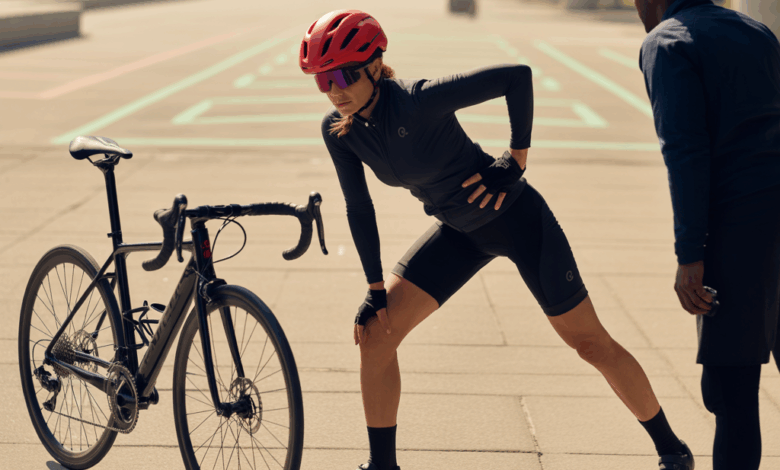How Can You Prevent Injury While Cycling

Ever been halfway through a beautiful ride when a niggling knee ache or a twinge in your lower back forced you to cut it short? If so, you’re not alone — and you might be wondering, how can you prevent injury while cycling so your rides stay fun and consistent. Whether you’re commuting, road cycling, or hitting singletrack, small changes in technique, training and equipment can make a huge difference.
Why preventing cycling injuries matters
Cycling is low-impact, efficient, and brilliant for fitness — but repetitive motion, poor bike fit, or weak supporting muscles can lead to overuse injuries, crashes, and time off the bike. Preventing injury protects your progress, keeps training consistent, and lets you enjoy cycling for years without setbacks. The good news: many common problems are preventable with targeted action.
How can you prevent injury while cycling: key strategies
1. Get a professional bike fit
A proper bike fit is the foundation of cycling injury prevention. Saddle height, fore-aft position, handlebar reach and cleat placement affect joint angles and muscle loading. A small adjustment to saddle height or handlebar position can relieve knee strain and neck or shoulder tension. If a professional fitting isn’t feasible, use self-checks: when the pedal is at its lowest point, your knee should have a slight bend (about 25–35°).
2. Build functional strength
Weak glutes, hips, and core increase the load on knees and lower back. Incorporate a simple strength routine 2–3 times per week to address these areas.
- Exercises: single-leg Romanian deadlifts, glute bridges, split squats, side planks, and Pallof presses.
- Workout variation: 3 sets of 8–12 reps for compound moves (e.g., split squats), 30–60s for core holds. Add resistance gradually.
- Time-saver: a 20–25 minute strength circuit post-ride or on recovery days significantly reduces overuse injury risk.
3. Prioritize mobility and flexibility
Tight hip flexors, hamstrings, or calves alter your pedal stroke and posture. Daily mobility work improves range of motion and helps distribute forces more evenly.
- Dynamic warm-up: leg swings, hip circles, and walking lunges before rides.
- Post-ride stretching: hamstring stretches, kneeling hip flexor stretch, and thoracic rotations for upper back mobility.
- Use foam rolling and targeted soft-tissue work for stubborn tight spots.
4. Train smart: progression and recovery
Many injuries come from doing too much too soon. Follow these guidelines:
- Increase weekly volume by no more than 10%.
- Alternate hard efforts with easy recovery rides or rest days.
- Use structured interval sessions to build fitness without excessive mileage — for example, 3 x 8-minute tempo intervals instead of a long, hard group ride every weekend.
- Prioritize sleep, hydration, and nutrition to support recovery — see our nutrition guides for fueling strategies.
5. Hone technique and bike handling
Poor technique can increase crash risk and strain. Practice these skills:
- Pedal smoothness: focus on a circular pedal stroke and avoid mashing at the top of the pedal.
- Cadence control: aim for 80–100 rpm for most road cycling to reduce joint stress.
- Cornering and braking drills: lower the chance of falls by practicing body position and braking before turns.
6. Use proper protective gear and maintain your bike
A well-maintained bike and proper safety equipment go hand-in-hand with injury prevention:
- Wear a correctly fitted helmet and consider gloves and padded shorts for comfort.
- Regularly check tire pressure, brakes, and chain health to avoid mechanical issues that lead to crashes.
- Replace worn cleats and brake pads — small parts can cause big problems.
Practical warm-up, cooldown, and a weekly sample plan
Quick 8-minute pre-ride warm-up
- 2 minutes light spinning
- 1 minute high-cadence spin (fast but controlled)
- 2 rounds of 30s single-leg pedal drills (each leg)
- 2 minutes dynamic leg swings and hip openers
5-minute post-ride cooldown
- Easy spinning for 3 minutes
- Stretch hamstrings, quads, and hip flexors for 30–45 seconds each
Sample weekly plan for injury prevention (beginner-intermediate)
- Mon: Rest or light mobility + strength (20 min)
- Tue: Interval ride (45 min with 3 x 6 min tempo)
- Wed: Recovery ride (45 min easy) + core work
- Thu: Strength session (25–30 min focused on glutes/hips)
- Fri: Technique ride (skills & cadence drills, 40–60 min)
- Sat: Long endurance ride (gradual progression) or group ride
- Sun: Active recovery or rest + foam rolling
Real-world examples: small fixes, big results
Case 1: A 35-year-old commuter had recurring anterior knee pain. A professional bike fit raised the saddle 5 mm and corrected cleat angle — pain improved within two weeks. Case 2: A weekend racer suffered lower back tightness. Adding two weekly 20-minute core and glute sessions reduced strain and improved power on climbs. These examples show how targeted changes can have immediate benefits.
Frequently Asked Questions
Q: How quickly will I see improvements if I start injury-prevention work?
A: Some changes — like improved comfort from a bike fit — can be noticeable immediately. Strength and mobility gains take 4–8 weeks of consistent work. The key is gradual, consistent effort.
Q: What are the most common cycling injuries and how can I avoid them?
A: Common issues include knee pain, lower back pain, neck/shoulder tension, and wrist numbness. Prevent them with proper bike fit, balanced strength training (especially glutes and core), regular mobility work, and correct riding posture.
Q: Is it OK to keep riding if something starts to hurt?
A: Mild, temporary discomfort can often be managed with reduced intensity, but sharp pain or worsening symptoms should prompt rest and assessment. If pain persists beyond a few days, consult a healthcare professional or a physiotherapist with cycling experience.
Conclusion — Take control of your rides and prevent injury
So, how can you prevent injury while cycling? Start with a proper bike fit, build functional strength, prioritize mobility, progress your training sensibly, sharpen your technique, and maintain your bike and gear. These practical steps reduce overuse problems, lower crash risk, and keep your cycling enjoyable for years to come. Ready to ride stronger and safer? Try the simple warm-up and the weekly plan above this week, and explore our workout routines and wellness tips pages for more guidance. Share your experiences in the comments — what small change made the biggest difference for your cycling?





